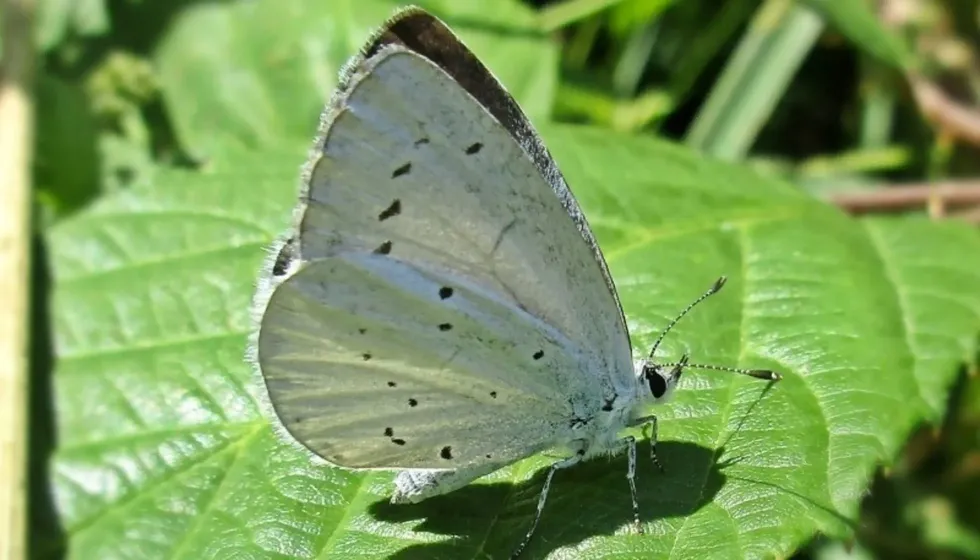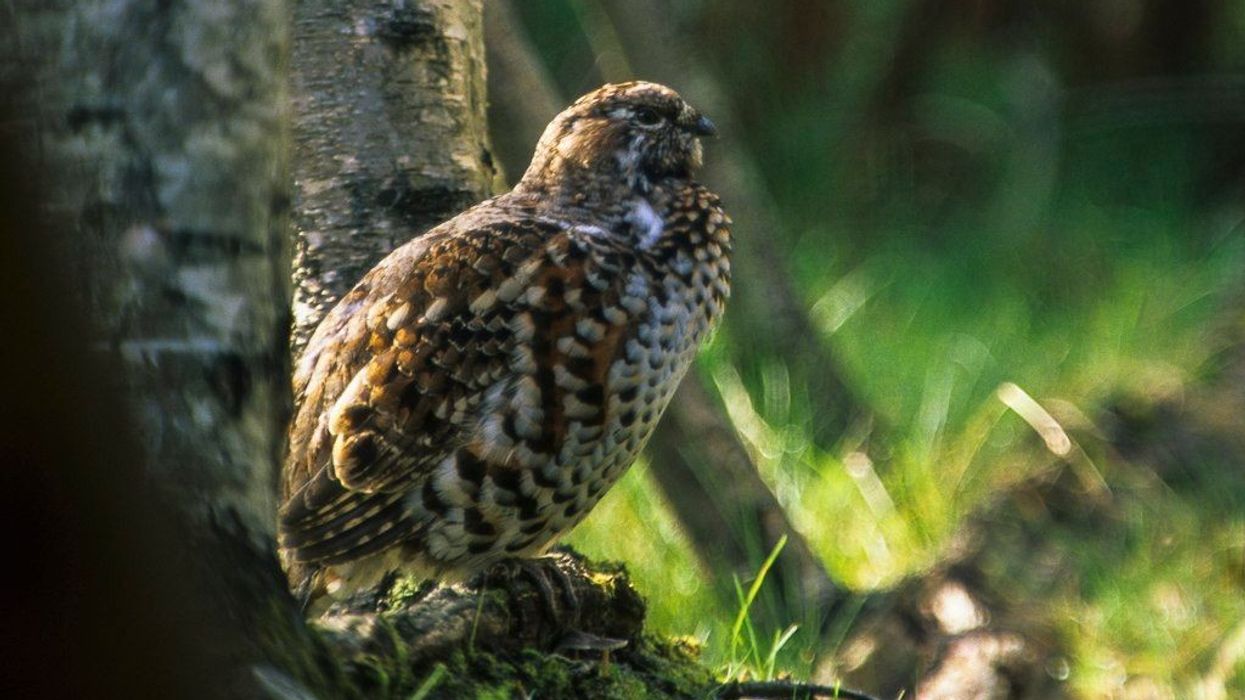If you like knowing about the various insects in the world, then you definitely should learn about the holly blue butterfly! As the name goes, it is known for its light blue-colored wings.
They are herbivores, primarily feeding on carrion juice, and oozing juices from fruits and more. The holly blue butterfly is a little butterfly whose bright blue color distinguishes habitat in artificial parks, woodland areas, and gardens.
They are green or brown larvae with yellowish-white markings having catenulate lines on the back. The pupa is usually attached to the leaf's underside.
The first offspring in Europe feeds primarily on holly species, whereas the second generation eats various plants. If you want to understand and learn more about this butterfly, then you can definitely scroll ahead!
Want to know more about all the interesting creatures in the world? Then check out other fun insects like the butterfly and gypsy moth.
Holly Blue Interesting Facts
What type of animal is a holly blue?
This species (scientific name: Celastrina argiolus) is a type of butterfly.
What class of animal does a holly blue belong to?
The holly blue butterfly belongs to the class of arthropod.
How many holly blues are there in the world?
Blue butterflies are members of the Lycaenidae family's Polyommatinae subfamily. Estimated numbers of these butterflies are untold. But the species goes between boom population cycles; determining whether it is doing quite well can be challenging. National figures, on the other hand, show huge growth in distribution and population.
Where does a holly blue live?
The distribution range of the holly blue butterfly includes Scotland, England, and Wales, while it is less common in Ireland.
What is a holly blue's habitat?
Both the holly blue butterfly and cabbage white butterfly live in the woodland regions. The pupa is normally joined to the leaf's base.
Who does a holly blue live with?
These holly blue butterflies mostly fly above the bushes are mostly solitary.
How long does a holly blue live?
The holly blue butterfly lifespan is about 115 days from egg until butterfly stage. The longevity of the viceroy butterfly is not more than 12 months.
How do they reproduce?
The holly blue species can have one to three broods every year, depending on weather and location. Females produce small, flattened whitish-green eggs, which hatch in nine days. With specific glue released by the butterfly, the eggs have adhered to the bottom of a leaf.
The caterpillar starts feeding as soon as it hatches. The newly hatched caterpillar undergoes numerous molts. Those who pupate in the spring hatch after a few weeks, whereas those who pupate later survive winter as pupae.
What is their conservation status?
The conservation status of holly blue, Celastrina argiolus, found in gardens, woodland areas, and parks of England is listed as Least Concern by IUCN Red List, same as the purple emperor butterfly.
Holly Blue Fun Facts
What does a holly blue look like?
The body of the caterpillar is segmented and brilliant green with pinkish markings. The holly blue has brilliant blue wings.
Whenever the wings are open, the male has a bright blue coloring on the dorsal surface of the wings with white tendrils and a white outer border, while the females get a similar pattern, albeit with black wing margins.
When the wings remain closed, the lower parts are pale blue with tiny black spots that set them apart from common blue.
The holly blue has a wingspan of 1.2-1.3 in (30.4-33 mm) on average. Holly blues are not as big as the extremely uncommon large blue, but it's a lot bigger than the minuscule small blue.
Males of the summer and spring brood seem similar. On the other hand, summer brood females have a much wider dark stripe on the upper side of their forewings than spring-breeding females.

How cute are they?
Because of the velvety skin, this species' caterpillar is surely adorable and cool-looking. They are undoubtedly one of nature's most stunning butterflies, with vibrant blue and scattered black spots.
How do they communicate?
There is not much known about holly blue communication patterns. It is thought that to attract females, males produce a chemical. Male bugs flap and flutter their wings to generate sounds in some circumstances. Their brilliant blue wings aid communication even at great distances.
How big is a holly blue?
The length range of holly blue is about 1.18 in (3 cm). The painted lady butterfly length measures between 2-2.5 in (5-6.3 cm). Therefore, the holly blue is smaller than the painted lady butterfly.
How fast can a holly blue fly?
The flight pattern of holly blue is quick and erratic. It flies high above trees and bushes, while other grassland blues stay close to the ground.
How much does a holly blue weigh?
There isn't much information about the actual weight of a holly blue found in England and mostly feed on flower buds.
What are the male and female names of the species?
The male and females of holly blue do not have particular titles. Summer and spring male broods look the same but summer and spring brood females don't resemble each other.
What would you call a baby holly blue?
There is no specific name for a baby blue sea holly. The pupa of these bugs is fastened to the leaf's underside.
What do they eat?
The larvae mostly eat the berries, flower buds, and distal leaves of holly during the spring generation, while eating ivy at the time of summer generation. Although female holly bushes are favored, the spring generation can finish larval growth on the foliage of male holly bushes.
Other than the flower buds, spindle, snowberries, bramble, and gorses are some of the other wild and gardening plants they use.
Are they poisonous?
You can observe the holly blue butterfly in gardens, parks and, woodlands in England and Wales and it is not poisonous.
Would they make a good pet?
Butterflies are one of the most popular insects due to their enchanting beauty, and they make excellent pets (like monarch butterflies) if their unique requirements for flight space and nutrients are met.
Did you know...
Finland's national butterfly is the holly blue.
The minuscule spikes on the backs of the wings reflect light, giving them a vibrant, shimmering blue color. However, when the wings are closed, the bottom of its wings is a drab brown color with many eyespots, giving disguises against predators like insects and birds.
What is the significance of a blue butterfly?
The blue color in a butterfly represents happiness, color, or a change in fortune. A blue butterfly is sometimes interpreted as a wish. The blue holly with a wingspan length of 1.2-1.3 in (30.4-33 mm) is preserved by Northern Ireland 1985 wildlife.
How do holly blue butterflies camouflage?
The developed larva has a striated appearance that is bright green in color, which helps the bug camouflage in with its host plant's leaves. They also have magnificent velvety hair covering their entire dorsal side.
Here at Kidadl, we have carefully created lots of interesting family-friendly animal facts for everyone to discover! For more relatable content, check out these plume moth facts and puss moth facts for kids.
You can even occupy yourself at home by coloring in one of our free printable holly blue coloring pages.










